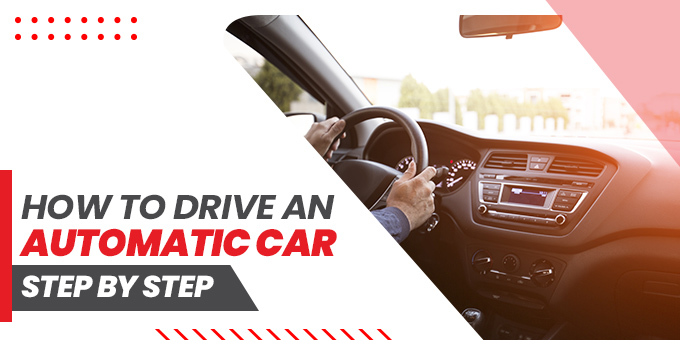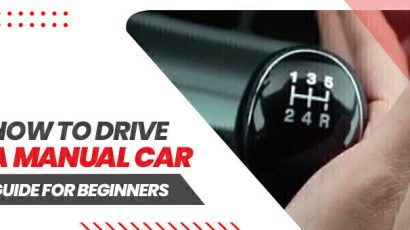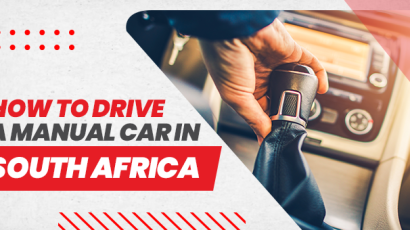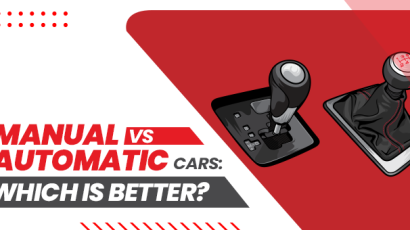
Driving an automatic car can be an enjoyable experience. With its simplified gear shifting and smooth acceleration, an automatic car can make your daily commute or road trip a breeze. However, if you’re new to driving or transitioning from a manual car, you may need some guidance on how to drive an automatic car. This article provides a step-by-step guide to help you learn to drive an automatic car.
Step 1: Adjusting the Seat and Mirrors
Learning how to drive an automatic car begins with adjusting your position. Adjusting your seat and mirrors for maximum comfort and visibility before you start driving is important. Your position should be relaxed, with your back straight and your hands resting on the steering wheel comfortably. Adjust the seat height, distance from the pedals, and backrest angle to ensure a comfortable driving position. Visit our website to check the best deals on Automatic used cars for sale in Zimbabwe.
Next, adjust the rearview and side mirrors to eliminate blind spots. The rearview mirror should allow you to see the entire rear window without moving your head. The side mirrors should be in a position where you can see the sides of your car and a small portion of the road behind you. By properly adjusting the mirrors, you can avoid accidents.
Step 2: Familiarizing with Controls
Once you’re seated comfortably, familiarize yourself with the car’s controls. The most important control is the gear selector, which is usually located in the center console or on the steering column.
Gears in an automatic car have four positions: P (Park), R (Reverse), N (Neutral), and D (Drive). Some cars may also have additional positions for manual shifting or other driving modes.
In addition to the gear selector, identify other important controls, such as the accelerator, brake, and steering wheel. Know the location and function of all the controls to ensure smooth and safe driving.
Step 3: Starting the Engine
To start the engine of an automatic car, insert the key into the ignition or press the start button, depending on the model of the car. Pay attention to the dashboard indicators and warning lights, which can provide important information about the status of your vehicle, such as fuel level, engine temperature, and battery charge. Ensure all the lights are functioning properly and that no warning signs indicate any issues before you start driving.
Step 4: Understanding Gear Shift Positions
One of the key differences between driving a manual car and an automatic car is the gear-shifting process. In an automatic car, the gears shift automatically without needing a clutch pedal. Understanding the different gear shift positions is crucial to driving an automatic car smoothly.
P (Park)
When the car is stopped and parked, this position is employed. The transmission becomes locked, stopping the automobile from rolling. When parking, always apply the parking brake, even if it is in the Park position.
R (Reverse)
This position is used when backing up the car. Make sure to check your surroundings and use the rearview and side mirrors for visibility while reversing.
N (Neutral)
This position is used when the car is not in motion and the engine is running. It disengages the transmission, allowing the car to roll freely without any power from the engine. Avoid keeping the car in Neutral while driving, as it can be dangerous.
D (Drive)
This is the main driving position and is used when you want to move forward. The car will automatically shift through the gears as needed based on the speed and driving conditions. If your vehicle has them, paddle shifters on the steering wheel or the “+” and “-” buttons on the gear selector can also be used to manually change ratios. This is not available in all cars.
Step 5: Accelerating and Braking
To accelerate in an automatic car, place your foot on the brake pedal and shift the gear selector to Drive (D). Gradually release the brake pedal and gently press the accelerator pedal with your right foot. Avoid sudden or jerky movements with the accelerator, as it can result in a jerky ride and poor fuel efficiency.
Release the accelerator pedal gradually and gently depress the brake pedal with your right foot to slow or stop the vehicle. Do not slam on the brakes since this could send the vehicle skidding or out of control.
If you need to come to a complete stop, shift the gear selector to the “N” (Neutral) position and apply the brakes until the car comes to a stop. Then shift to “P” (Park) when the car is stationary.
Step 6: Steering and Turning
Driving a manual car is identical to driving an automatic car in terms of steering and turning. Turn the steering wheel in the desired direction while holding it with both hands. Avoid making sudden curves or oversteering, especially at high speeds, as these might make the vehicle lose control.
Use the appropriate turn signal to indicate your intention to other drivers when turning. Make sure to turn off the turn signal after completing the turn. Use the side mirrors and look over your shoulder to check for any oncoming traffic or pedestrians before making a turn.
Step 7: Parking and Exiting the Vehicle
Parking an automatic car requires careful maneuvering to ensure the safety of the vehicle and other road users. You may need to use different parking techniques, depending on the situation.
Parallel Parking
This is the most common type of parking in urban areas. It requires parking the car parallel to the curb, with its front and rear bumpers aligned with the vehicles parked in front and behind. Leave enough space between your car and the other vehicles, and use your turn signal to indicate your intention to park.
Perpendicular Parking
It is necessary to park the vehicle perpendicular to the curb or parking spaces when using this kind of parking, which is frequently utilized in parking lots. To signify your intention to park, drive straight ahead and apply the proper turn signal. Be cautious of other vehicles and pedestrians while maneuvering into the parking space.
Angle Parking
Parking a vehicle at an angle to the curb or parking spaces is a common practice in parking lots. Slowly pull up to the parking spot, position your car correctly, then switch on your turn signal to signify that you want to park.
When exiting the vehicle, make sure to engage the parking brake, turn off the engine, and take your keys with you. Double-check that all doors are securely locked before leaving the car unattended.
Step 8: Dealing with Emergency Situations
As a responsible driver, knowing how to handle emergency situations while driving an automatic car is important. Here are some tips:
Brake Failure
If you experience brake failure, remain calm and keep both hands on the steering wheel. Use the handbrake to slow down the automobile and the gear selector to shift to Neutral (N). Find a secure location to stop so you can phone for help.
Engine Overheating
Pull aside right away and turn off the engine if you see steam coming or the engine temperature indicator rising quickly. Before monitoring the coolant level and dialing for assistance, let the engine cool down.
Tire Blowout
If you experience a sudden tire blowout, grip the steering wheel firmly and keep the car straight. Avoid slamming the brakes and gradually release the accelerator pedal. Once the car is under control, pull over to a safe spot and change the tire or call for roadside assistance. To get the best deals on Japanese Automatic Cars, visit SBT Japan.
End Note
Learning how to drive an automatic car is not difficult. Once you understand the basic steps and techniques, it will be easy. It’s important to familiarize yourself with all the controls and handling of the car to drive it smoothly. Make sure you remain alert while driving. With practice and confidence, you can become a skilled automatic car driver and enjoy the freedom of the open road.











